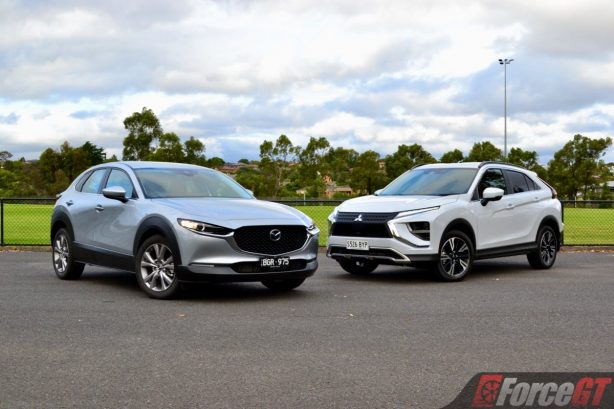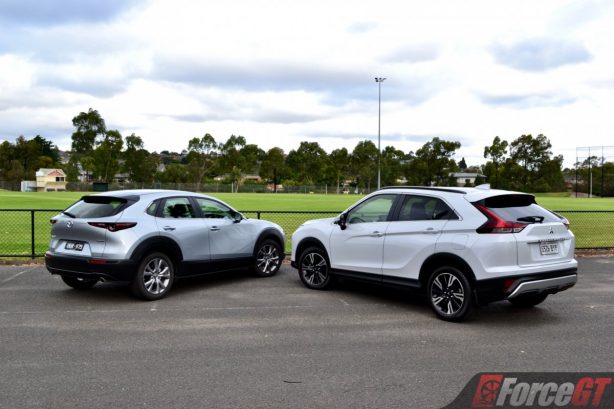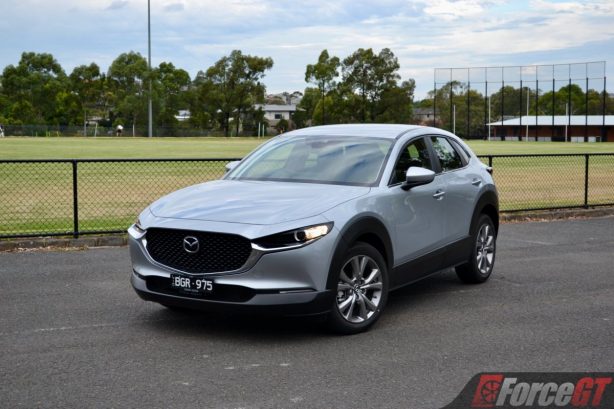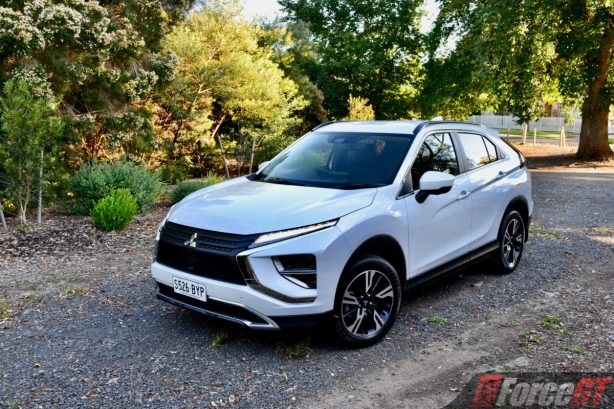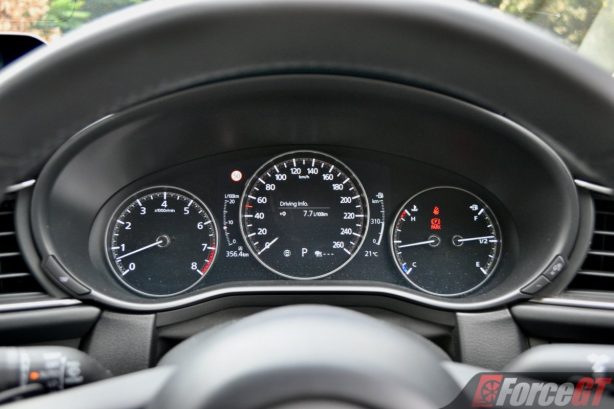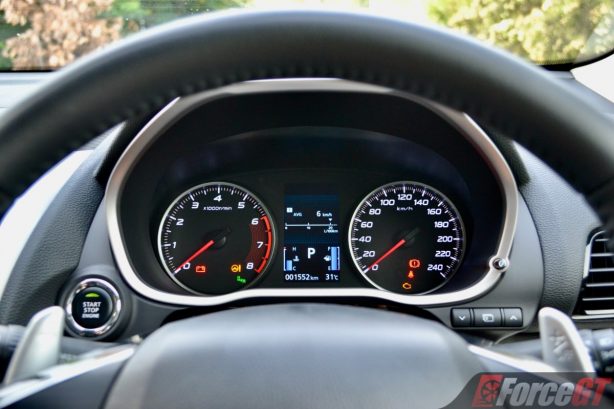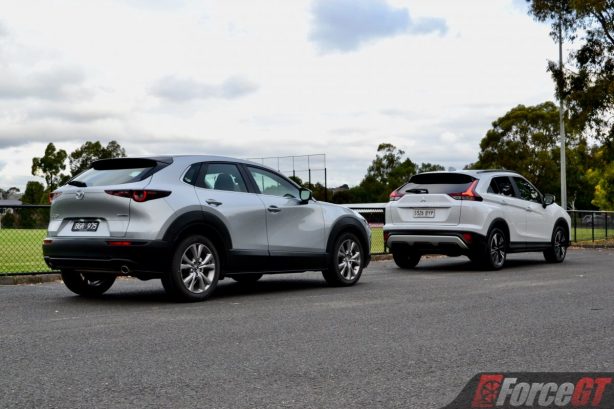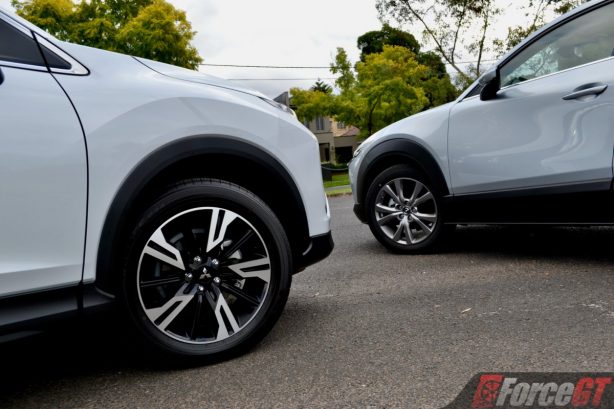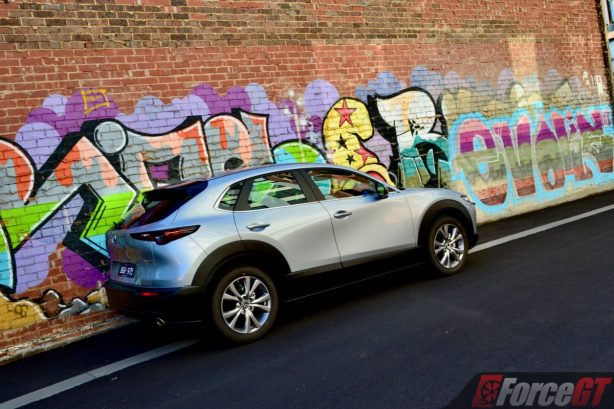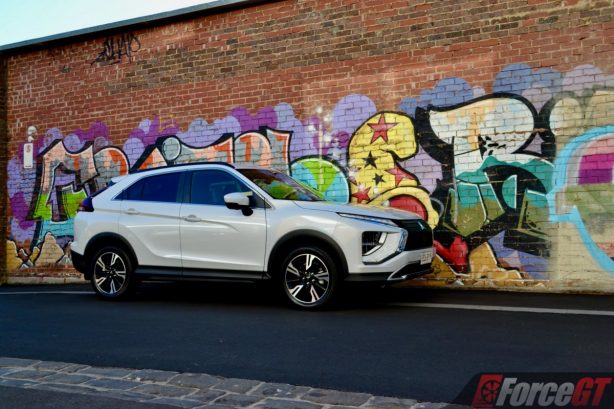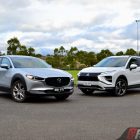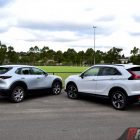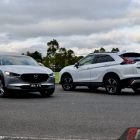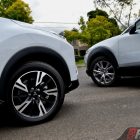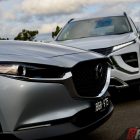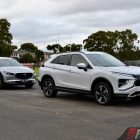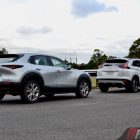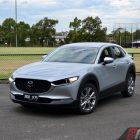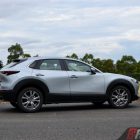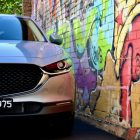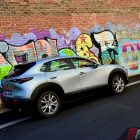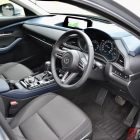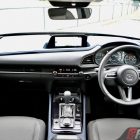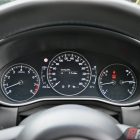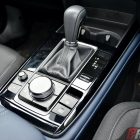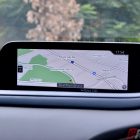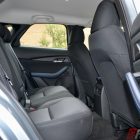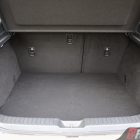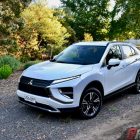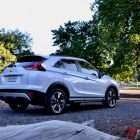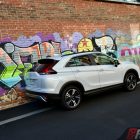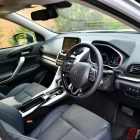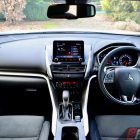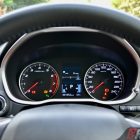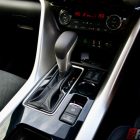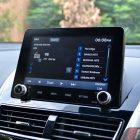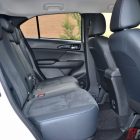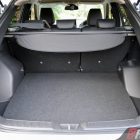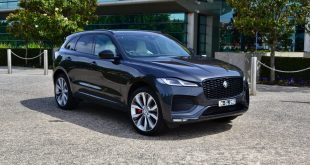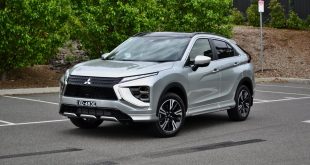Style and practicality – two very important criteria when buying compact passenger cars, but more often than not we can only have one or the other, not both. The Mazda CX-30 is no doubt a design triumph, but is it practical? The Mitsubishi Eclipse Cross offers impressive space, but is it at the expense of style?
We gather both cars for a comparison review to find the answers to those questions, plus more.
Range and pricing
The Mazda CX-30 is the newer of the two compact SUVs, having been introduced in early 2020 to bridge the gap between Mazda’s city-size CX-3 crossover and the CX-5 medium SUV. Sharing the same platform with the Mazda 3 small car, the CX-30 is available in front- or all-wheel drive, with price ranging from $29,990 to $43,490 before on-road costs. We tested the most popular model in the range – the $31,490 plus ORCs mid-spec CX-30 Evolve front-wheel drive automatic.
Like the CX-30, the Mitsubishi Eclipse Cross was also designed to be a gap-filler, slotting in between the smaller ASX and larger Outlander in Mitsubishi’s comprehensive SUV line-up. Recently updated for 2021, the Eclipse Cross is offered in front- or all-wheel drive, with prices stretching from $30,290 to $40,790 before on-road costs. The mid-spec Eclipse Cross Aspire front-wheel drive model tested here is priced at $34,990 plus ORCs.
On the outside
Both crossovers have taken vastly different approach to design. Mazda’s push toward the premium space has seen the CX-30 adopting a more upmarket design, with clean, sculpted surfaces characterising its classy look. And despite being the second least expensive variant in the range, the CX-30 Evolve tested here still features plenty of details such as the chrome Mazda corporate mesh grille, dynamic LED turn indicators and 18-inch alloy wheels.
As part of the 2021 update, the Mitsubishi Eclipse Cross has been given a facelift which saw its length increased by some 140mm, mostly around the longer rear overhang.
Contrary to the CX-30’s elegant design, the Eclipse Cross has taken on a more edgy styling. The revised cyborg look front fascia is an evolution of Mitsubishi’s ‘Dynamic Shield’ corporate family look, with it incorporating separate daytime running light and main beam clusters.
The front fascia sets the theme for the rest of the styling, with bold creases characterising the shoulder lines down the sides, culminating at the lift back rear design where the taillights and tailgate have been updated. The Eclipse Cross also rides on 18-inch wheels.
Deciding on which car looks better is subjective, but one thing certain is that neither cars have any bad angles. So, it all comes down to whether you prefer the refined and premium look of the Mazda or the contemporary and rigid design of the Mitsubishi.
On the inside
Mazda’s premium aspiration is even more evident on the inside of the CX-30. Based largely on the interior of the Mazda 3, the CX-30’s cabin oozes quality, sophistication and premium vibe that you don’t see anywhere else in the mainstream segment, and certainly not at this price point.
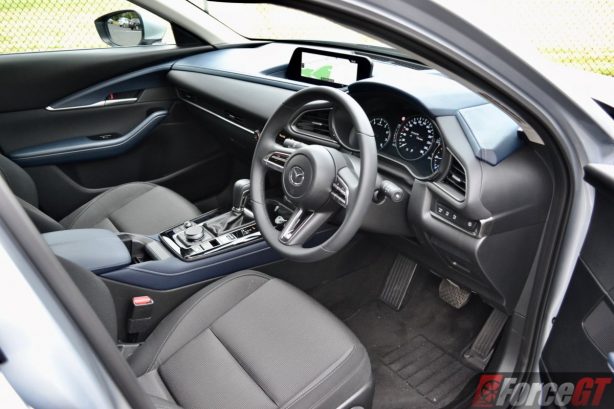
The layered dashboard is simple yet functional, with an 8.8-inch widescreen infotainment display elegantly perched in the centre and all controls within easy reach of the driver and front passenger. The steering wheel looks superb and is lovely to hold. The grey-blue two-tone interior colour scheme gives a cool ambiance, lifted by gloss black, chrome and silver highlights and trim inserts throughout the cabin.
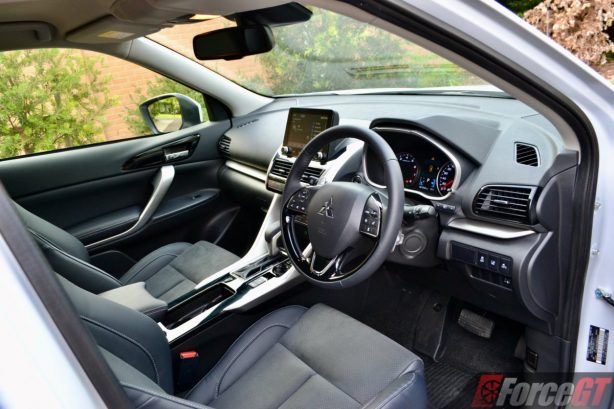
While the CX-30’s interior execution is one that is refined and delicate, the Eclipse Cross’ approach seems a little heavy handed. The silver trim pieces in the centre console look quite chunky and the buttons and knobs are nowhere near as tactile as those in the Mazda.
Unlike in the CX-30 where the centre infotainment screen is remotely operated using the rotary dial in the centre console, the 8.0-inch display in the Eclipse Cross has now been updated to a touchscreen and the far-left side of the screen can be a bit of a stretch for drivers who don’t have long arms.
Elsewhere, the driver information display nestled between the driving gauges in the instrumentation cluster is also starting to look a bit long in the tooth. The spokes on the steering wheel feel a little bulky, but the aluminium paddle shifters – lifted straight from the now discontinued Lancer Evolution X spots sedan – look properly good and feel great to use.
Despite fetching a higher sticker price, the Eclipse Cross misses out on a few features that are fitted as standard on the CX-30, namely head-up display (HUD). LED headlights, built-in satellite navigation and wireless Apple CarPlay.
Both crossovers are matched when it comes to safety though, with the pair equipped as standard with automatic emergency braking, rear cross traffic alert, adaptive cruise control, blind spot monitoring and lane keep assist. The Eclipse Cross Aspire grade does go a step further with the inclusion of a 360-degree view camera and parking sensors, both are part of an $1,500 optional package in the CX-30 called the Vision Technology pack. Both cars are also built to the typically high standards of Japanese made cars, with flawless alignment and tight fit and finish.
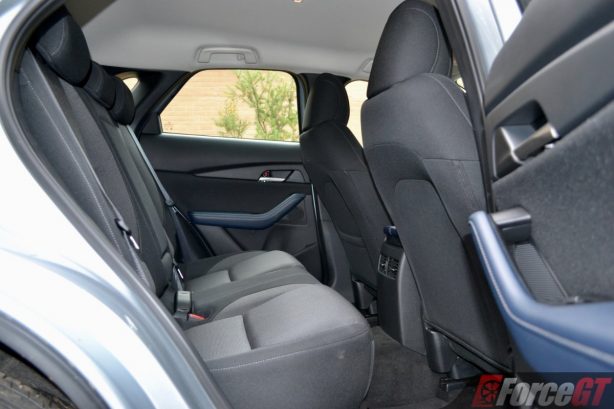
As mentioned, style and practicality often don’t mix, and in the case of the CX-30 it’s more of the former and less of the latter. That’s not to say the Mazda is impractical, but in comparison to the Eclipse Cross the CX-30 has less legroom in the back. The overall vertical space of the cabin is also greater in the Mitsubishi thanks its taller dimension, affording more headroom and carrying capacity. It feels airier in the Eclipse Cross, too, due to those larger windows.
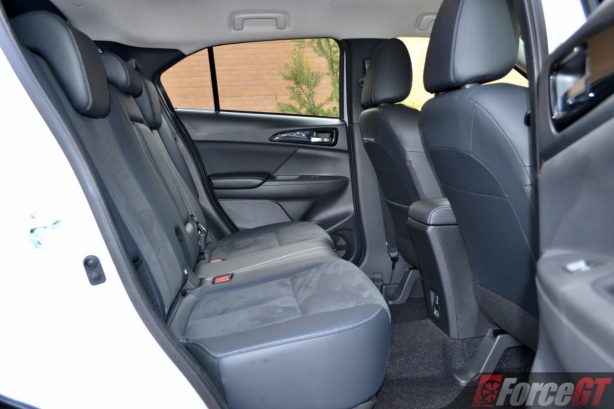
While rear passengers in the Mazda might have less space to stretch around, they do get the comfort of rear air con vents, which are missing in the Mitsubishi. The rear seats of the Mazda also provide slightly better support than the flatter benches in the Mitsubishi.
Further back, it’s again no surprise that the Eclipse Cross has the larger boot. At 405 litres, the boot is a good 88 litres larger than that of the CX-30, which measures at just 317 litres. Both cars can expand their boot space by tumbling the rear seats.
Under the skin
The CX-30 G20 variant tested here is powered by a 2.0-litre normally aspirated four-cylinder engine. Running Mazda’s SkyActiv high compression engine technology, it produces 114kW of power at 6000rpm and a healthy 200 Nm of torque at 4000 rpm. It’s paired with a 6-speed automatic transmission with power channelled to the front wheels.
The Eclipse Cross is motivated by a 1.5-litre turbocharged four-cylinder engine rated at 110kW at 5500rpm and 250Nm from 2000 to 3500rpm. It’s matched with a continuously variable transmission (CVT) automatic driving the front wheels.
Not surprising, the turbocharged Eclipse Cross wins hands down in outright engine performance thanks to stronger torque that also arrives much earlier in the rev range, delivering quicker acceleration off the line. But that’s about the only victory for the Mitsubishi in this department, as the Mazda is more refined, and its 6-speed auto is without question the more engaging gearbox here.
On the road
Mazda has been churning out some of the best driver’s cars we have tested in recent years and the CX-30 is no exception. It handles with the kind of poise and composure that you wouldn’t have come to expect from a high-riding crossover. The steering is smooth, precise and perfectly weighted, while grip from the tyres is excellent. The combination of those affords the driver a confidence inspiring and sporty drive.
The Eclipse Cross isn’t far behind in terms of handling, delivering sharp turn-in responses and good body control, let down only by the overly light steering wheel that doesn’t quite firm up with speed and slightly more roll around the bends.
Both cars are comfortable around town, soaking bumps and ruts with aplomb. The Eclipse Cross does have a bit more wind and road noise, though.
In the long run
Both the CX-30 and Eclipse Cross come with the standard warranty of 5 years, with the Mazda not capped by kilometres while the Mitsubishi is limited to 100,000km. Eclipse Cross Owners do have the chance to have their warranty period extended to 10 years and 200,000km if they have all scheduled services done through the authorised Mitsubishi dealer network.
The Mazda requires a service at 10,000km or 12 months, while the Mitsubishi is not due for one until 15,000km or 12 months.
Both cars are offered with capped price servicing, with the CX-30 capped at $316 per service for the first 5 years or 50,000km, and the Eclipse Cross asking $299 for each dealer visit for the first 5 years or 75,000km. This makes the Mitsubishi the cheaper car to maintain in the long term.
That said, the CX-30 fares better at the bowser with a tested average fuel economy of 7.6L/100km, compared to the Eclipse Cross’ thirstier 8.4L/100km. On paper, both cars are respectively rated at 6.5L/100km and 7.3L/100km. Both cars also chew on less expensive RON 91 unleaded petrol.
Verdict
Here are two compact crossovers playing in the same segment but are vastly different cars. The Mazda CX-30 is all about style, upscale interior presentation, the latest tech and a premium and refined driving feel. The cabin might be a bit tighter, but that’s about all the faults you could find with it.
The Mitsubishi Eclipse Cross, with its spacious cabin, is no doubt the more practical offering of the pair. That combines with punchy turbo power makes the Eclipse Cross an easy choice for those wanting a no-fuss small SUV.
But the CX-30 is simply too hard to not fall in love with, for it offers a richer, more luxurious and more all rounded driving and ownership experience. And for that, the CX-30 takes the win in this compact crossover shootout.
2021 Mazda CX-30 G20 Evolve 2WD | 2021 Mitsubishi Eclipse Cross Aspire 2WD | |
| Design and Comfort | 8.5 | 8.0 |
| Performance and Handling | 8.5 | 8.0 |
| Quality | 8.5 | 8.0 |
| Economy | 8.0 | 7.5 |
| Equipment and Features | 8.5 | 7.5 |
| Overall | 42/50 | 39/50 |
Pricing and Specifications
2021 Mazda CX-30 G20 Evolve 2WD | 2021 Mitsubishi Eclipse Cross Aspire 2WD | |
| Price (excluding on-road costs): | From $31,490 | From $34,990 |
| Warranty: | 5 years, unlimited km | 5 years, 100,000 km |
| Warranty Customer Assistance: | 5 years roadside | 1 year roadside |
| Service Intervals: | 12 months, 10,000km | 12 months, 15,000km |
| Country of Origin: | Japan | Japan |
| Engine: | 2.0-litre four-cylinder petrol:114kW @ 6000rpm, 200Nm @ 4000rpm | 1.5-litre four-cylinder turbocharged petrol: 110kW @ 5500rpm, 250Nm @ 2000-3500rpm |
| Transmission: | 6-speed automatic | CVT automatic |
| Drivetrain: | Front-wheel drive | Front-wheel drive |
| Power-to-Weight Ratio (W/kg): | 83.8 | 74.3 |
| 0-100km/h (seconds): | 10.2 | N/A |
| Combined Fuel Consumption (L/100km): | Claimed: 6.5/Tested: 7.6 | Claimed: 7.3/Tested: 8.4 |
| RON Rating: | 91 | 91 |
| Fuel Capacity (L): | 51 | 63 |
| Body: | 5-door SUV, 5-seats | 5-door SUV, 5-seats |
| Safety: | 5-star ANCAP, 7 airbags, ABS, BA, EBD, ESC, Lane Departure Warning, Lane-Keep Assist System, Blind Spot Monitoring, Rear Cross Traffic Alert, Emergency Brake Assist, Smart Brake Support, Smart City Brake Support, Head-Up Display (HUD), ISOFIX | 5-star ANCAP, 7 airbags, ABS, BA, EBD, ESC, Lane Departure Warning, Lane-Keep Assist System, Blind Spot Monitoring, Rear Cross Traffic Alert, Emergency Brake Assist, Automatic Emergency Braking, 360-degree view monitor, front and rear parking sensors, ISOFIX |
| Dimensions (L/W/H/W-B): | 4,395/1,795/1,540/2,655 | 4,545/1,805/1,685/2,670 |
| Turning Circle Between Kerbs: | 10.6 | 10.9 |
| Kerb Weight (kg): | 1,442 | 1,480 |
| Entertainment: | 8.8-inch touchscreen infotainment system, satellite navigation, Bluetooth, USB, AUX, CD, AM/FM/DAB+, Wireless Apple CarPlay/Android Auto, 8-speaker BOSE stereo | 8.0-inch touchscreen infotainment system, Bluetooth, USB, AUX, CD, AM/FM, Apple CarPlay/Android Auto, 8-speaker stereo |
 ForceGT.com Car News, Car Reviews, Video Reviews, Tuning and much more.
ForceGT.com Car News, Car Reviews, Video Reviews, Tuning and much more. 